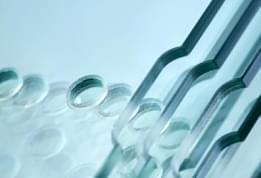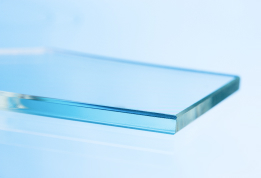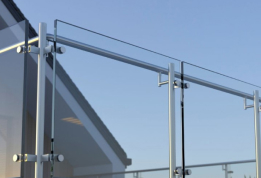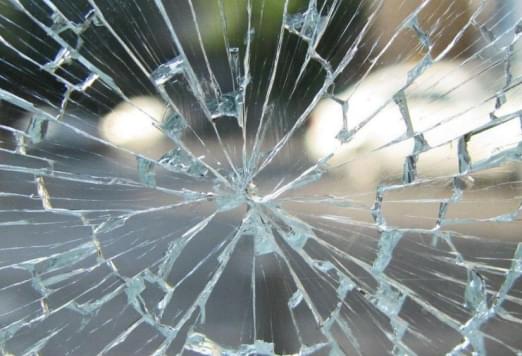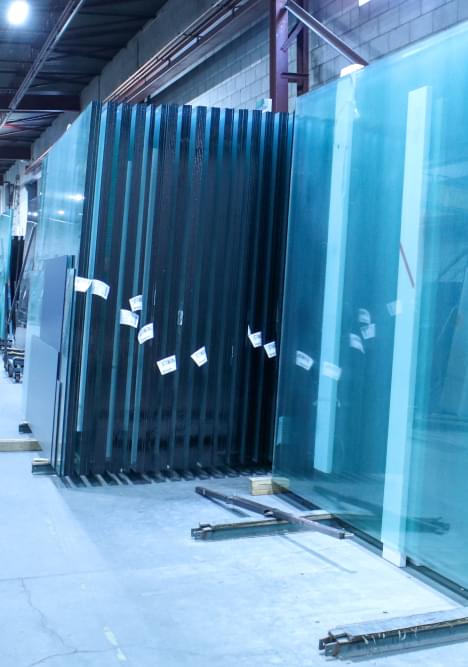Safety Glass: More than just a matter of safety
Instead of shattering into dangerous, jagged pieces, safety glass breaks into small, harmless fragments when struck.
The first methods of introducing safety glass was in 1909 with the use of celluloid as an interlayer between two sheets of ordinary glass. Down the road, the use of polyvinyl butyral was deemed to be more desirable in terms of safety properties.
In most cases, this type of glass is made in the modern era via one of the following two methods.
The first method involves laminating two sheets of ordinary glass using thin plastic as their interlayer. The second revolves around its construction through heat treatment – adding more strength to the glass sheets.
Of the two methods, the second is far more prevalent. Before we touch upon why, the basic premise involves tempering the glass at ~1200°F followed by a rapid cooling during the heat treatment technique. As for the reasons propelling this fabrication method into widespread usage? It imbues the safety glass with ample strength, making it ~6x stronger than ordinary glass and, once broken, shatters into dull, unpointed granules.
Adaptability
Safety is typically at the heart of why this type of glass sits at the top of the list of choices for most modern building enclosures. However, safety features aside, there also exist its desirable properties of radiant energy transfer and conductive heat transfer - key considerations in the design of many commercial buildings.
To add to these benefits, unlike other transparent materials common in low-rise residential buildings, this toughened glass is very important for establishments looking to feature a fully controlled atmosphere. In fact, the glass is ideal for double glazing and can minimize heat transfer and reduce condensation from forming on the glass. What’s more, property owners can further reduce light transmission by considering implementing tinting into the glass in different colours, such as grey or bronze.
So, if you think that your application can benefit from the use of this type of glass to surround your commercial space or provide protection in your home, get in touch with us at All Team Glass to discuss your potential options!

Instead of shattering into dangerous, jagged pieces, safety glass breaks into small, harmless fragments when struck.
The first methods of introducing safety glass was in 1909 with the use of celluloid as an interlayer between two sheets of ordinary glass. Down the road, the use of polyvinyl butyral was deemed to be more desirable in terms of safety properties.
In most cases, this type of glass is made in the modern era via one of the following two methods.
The first method involves laminating two sheets of ordinary glass using thin plastic as their interlayer. The second revolves around its construction through heat treatment – adding more strength to the glass sheets.
Of the two methods, the second is far more prevalent. Before we touch upon why, the basic premise involves tempering the glass at ~1200°F followed by a rapid cooling during the heat treatment technique. As for the reasons propelling this fabrication method into widespread usage? It imbues the safety glass with ample strength, making it ~6x stronger than ordinary glass and, once broken, shatters into dull, unpointed granules.
Adaptability
Safety is typically at the heart of why this type of glass sits at the top of the list of choices for most modern building enclosures. However, safety features aside, there also exist its desirable properties of radiant energy transfer and conductive heat transfer - key considerations in the design of many commercial buildings.
To add to these benefits, unlike other transparent materials common in low-rise residential buildings, this toughened glass is very important for establishments looking to feature a fully controlled atmosphere. In fact, the glass is ideal for double glazing and can minimize heat transfer and reduce condensation from forming on the glass. What’s more, property owners can further reduce light transmission by considering implementing tinting into the glass in different colours, such as grey or bronze.
So, if you think that your application can benefit from the use of this type of glass to surround your commercial space or provide protection in your home, get in touch with us at All Team Glass to discuss your potential options!
